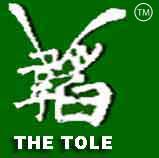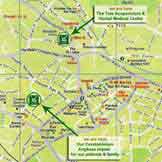Do you ever experience moments when your head feels like it's pounding with a relentless intensity? Imagine feeling as if a tight band is wrapped around your skull, squeezing with every beat of your heart. This discomfort can be incredibly debilitating, disrupting your day-to-day activities and leaving you searching for a way to alleviate the agony.
For those who undergo such distress, TheTole offers a beacon of hope. We specialize in a unique approach to soothing the persistent throbbing that often accompanies these episodes. Through a combination of ancient techniques and natural remedies, we aim to restore balance and harmony within the body, providing relief from the relentless discomfort that plagues many.
At TheTole, we understand the profound impact that these episodes can have on one's quality of life. It's not just about alleviating the physical discomfort but also about restoring a sense of well-being and normalcy. Our approach involves tapping into the body's innate ability to heal itself, utilizing gentle methods to encourage relaxation and ease tension.
Central to TheTole's approach is the practice of acupuncture, an ancient Chinese therapy that involves the insertion of fine needles into specific points on the body. Rather than viewing the body as a collection of isolated symptoms, acupuncture treats it as a holistic system, aiming to rebalance the flow of energy, or qi, within. By targeting key points related to the head and neck, acupuncture can help alleviate the intense discomfort associated with these episodes, promoting a sense of relief and relaxation.
In addition to acupuncture, TheTole also harnesses the power of herbal remedies to complement the therapy approach. These natural remedies, derived from plants and herbs, are carefully selected for their ability to address the underlying imbalances that may contribute to head discomfort. From soothing herbs that calm the nervous system to those with anti-inflammatory properties, these natural remedies work in harmony with the body to promote healing from within.
Beyond the physical techniques, TheTole also emphasizes the importance of lifestyle modifications and self-care practices. We recognize that factors such as tension, poor sleep, and dietary habits can all influence the frequency and intensity of these episodes. Through personalized guidance and support, we empower individuals to make positive changes in their daily lives, fostering a sense of empowerment and control over their well-being.
For those who have struggled with persistent head discomfort, TheTole offers a ray of hope. Through our unique blend of ancient wisdom and modern understanding, we provide a holistic approach to finding relief and restoring balance within the body. Whether it's through the gentle touch of acupuncture, the healing power of herbal remedies, or the guidance towards healthier lifestyle choices, TheTole stands as a beacon of support for those seeking respite from the relentless throbbing that plagues them. |
















